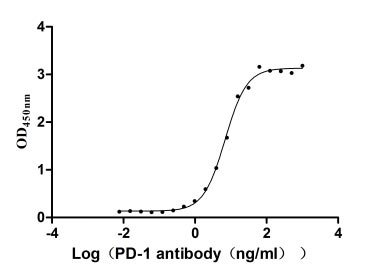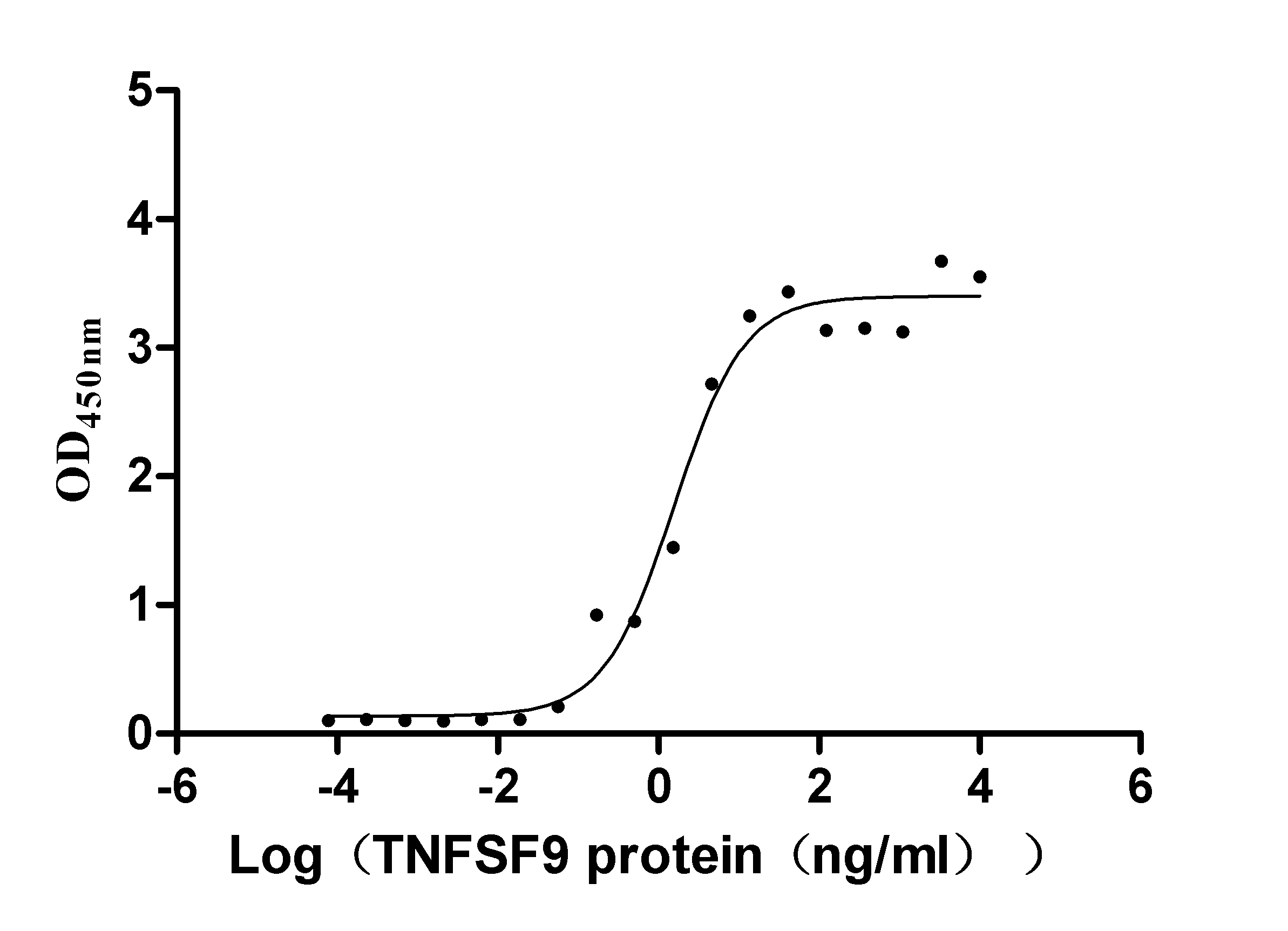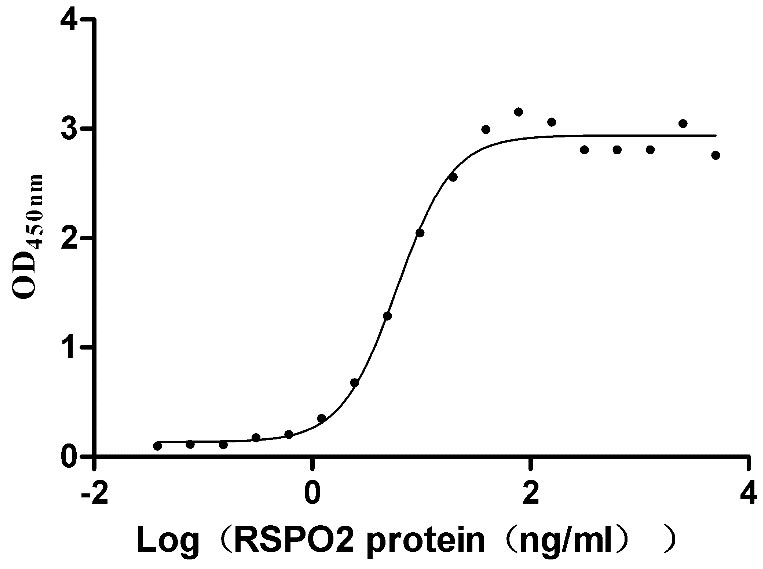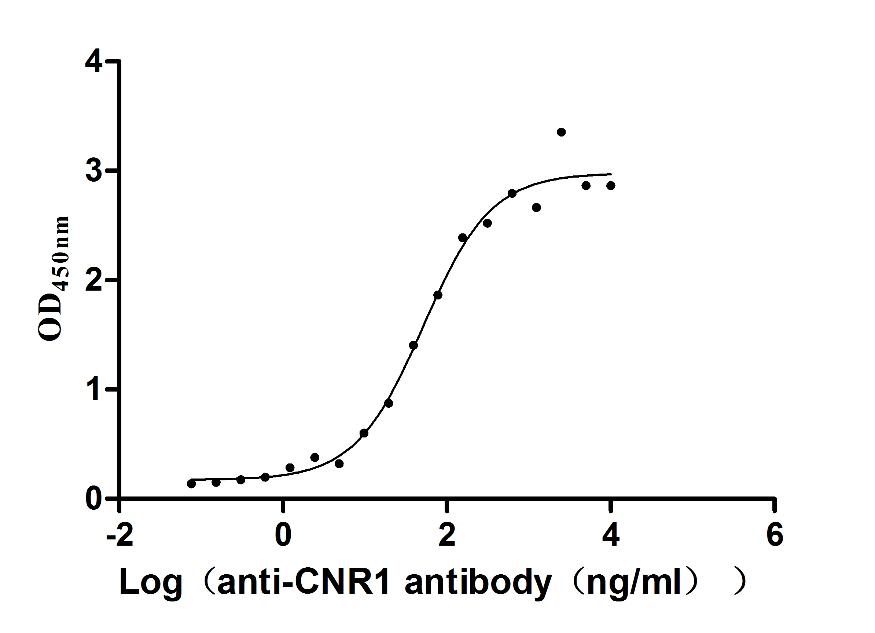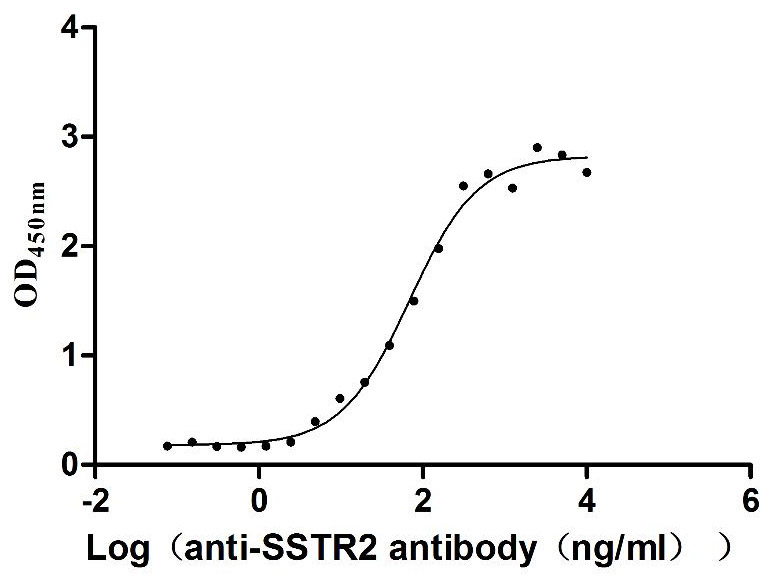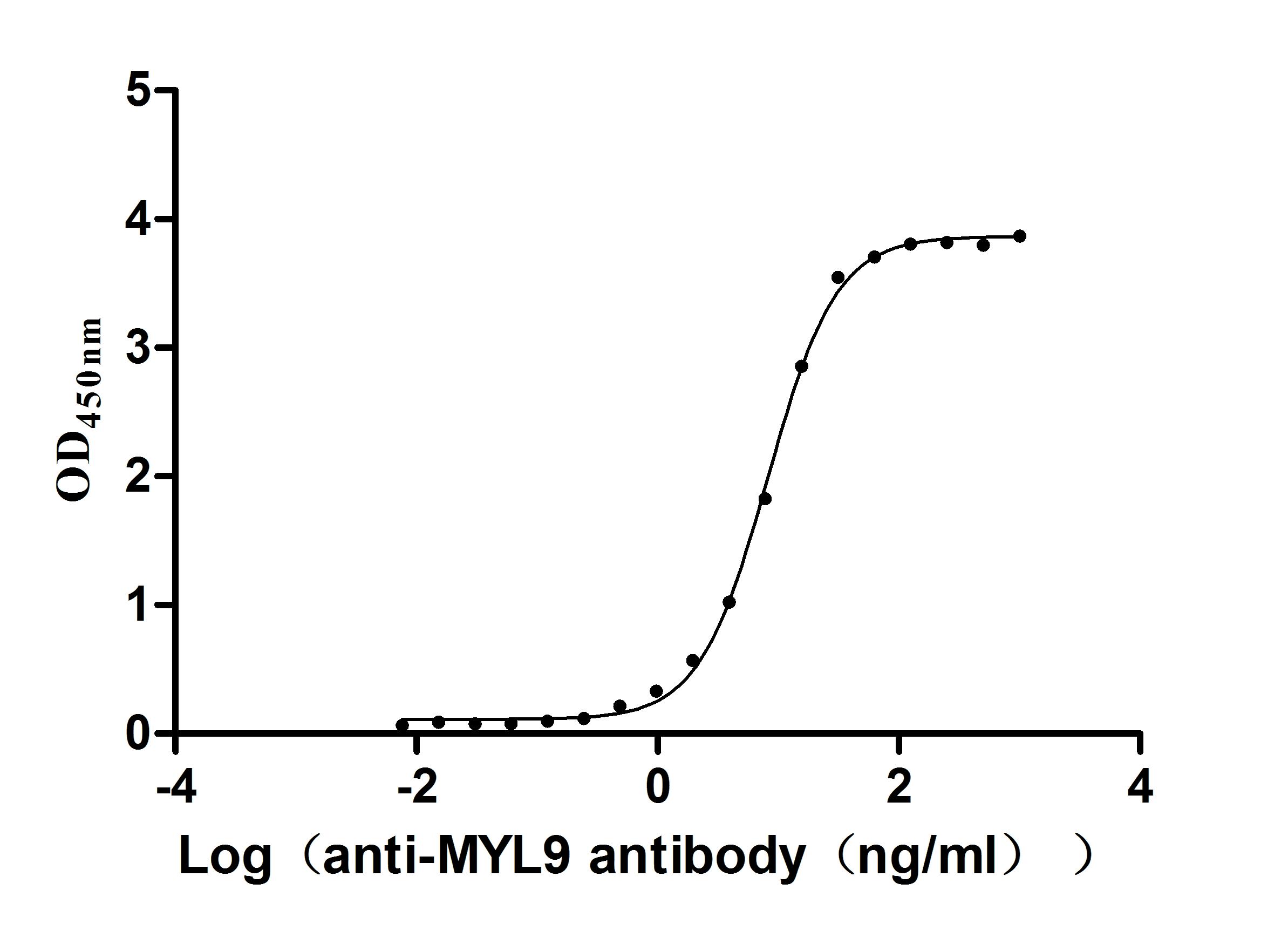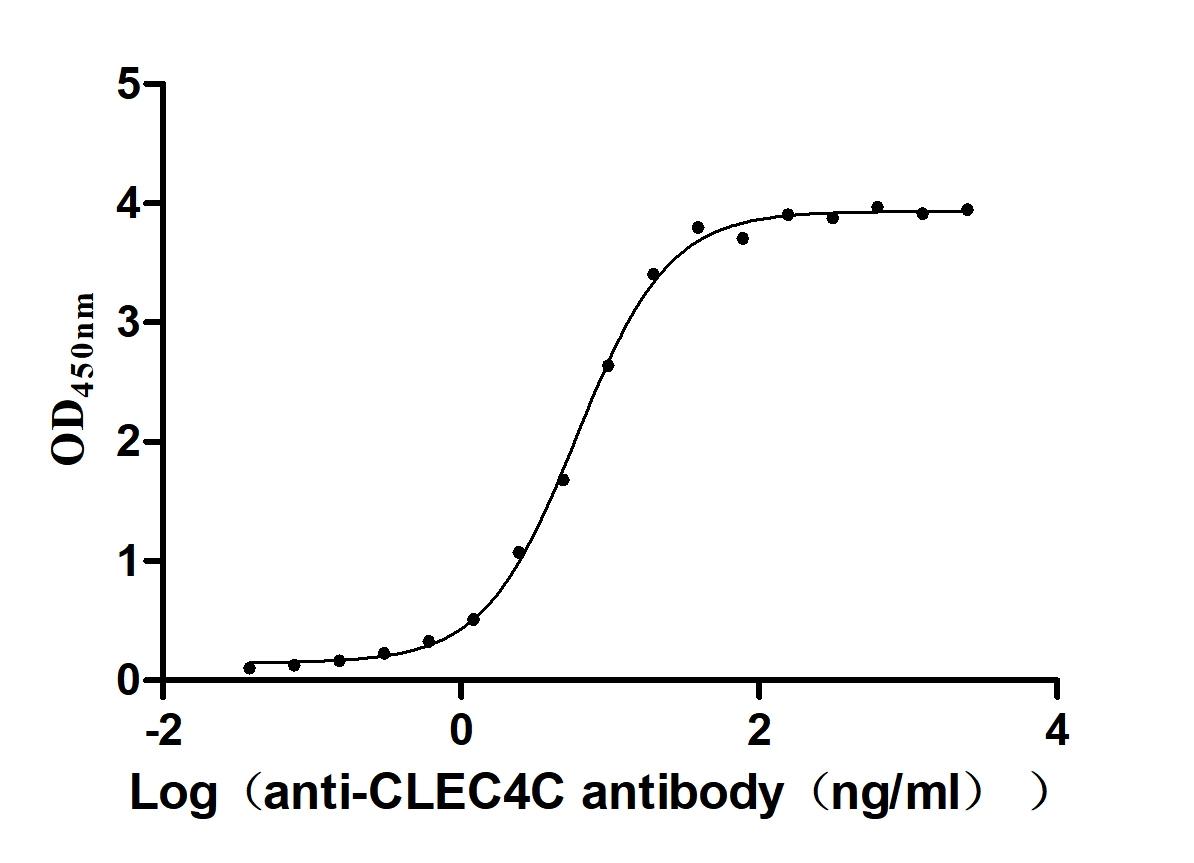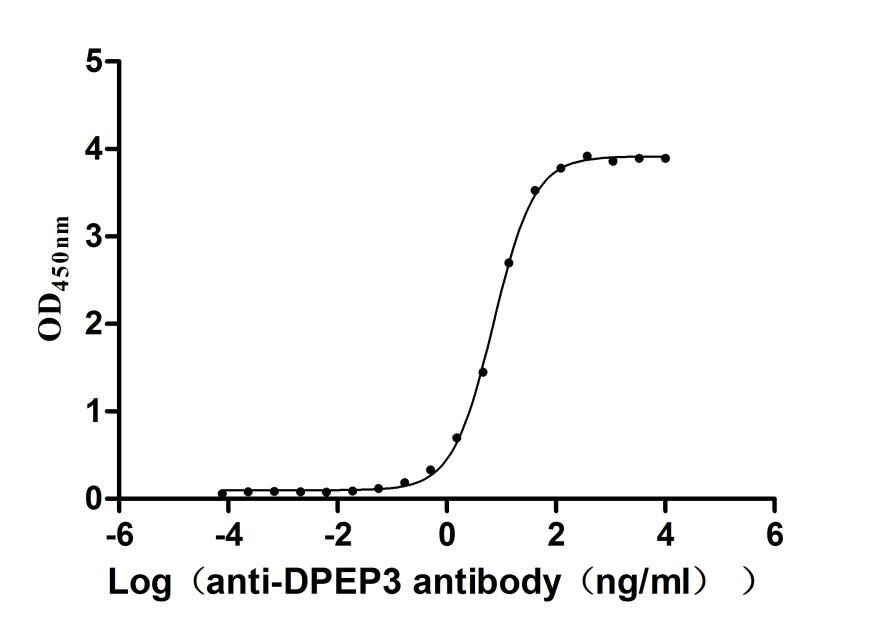Recombinant Saccharomyces cerevisiae Protein RPN4 (RPN4), partial
-
中文名稱:釀酒酵母RPN4重組蛋白
-
貨號:CSB-YP311782SVG
-
規(guī)格:
-
來源:Yeast
-
其他:
-
中文名稱:釀酒酵母RPN4重組蛋白
-
貨號:CSB-EP311782SVG
-
規(guī)格:
-
來源:E.coli
-
其他:
-
中文名稱:釀酒酵母RPN4重組蛋白
-
貨號:CSB-EP311782SVG-B
-
規(guī)格:
-
來源:E.coli
-
共軛:Avi-tag Biotinylated
E. coli biotin ligase (BirA) is highly specific in covalently attaching biotin to the 15 amino acid AviTag peptide. This recombinant protein was biotinylated in vivo by AviTag-BirA technology, which method is BriA catalyzes amide linkage between the biotin and the specific lysine of the AviTag.
-
其他:
-
中文名稱:釀酒酵母RPN4重組蛋白
-
貨號:CSB-BP311782SVG
-
規(guī)格:
-
來源:Baculovirus
-
其他:
-
中文名稱:釀酒酵母RPN4重組蛋白
-
貨號:CSB-MP311782SVG
-
規(guī)格:
-
來源:Mammalian cell
-
其他:
產(chǎn)品詳情
-
純度:>85% (SDS-PAGE)
-
基因名:RPN4
-
Uniprot No.:
-
別名:RPN4; SON1; UFD5; YDL020C; D2840; Protein RPN4; Nuclear protein SON1; Ubiquitin fusion degradation protein 5
-
種屬:Saccharomyces cerevisiae (strain ATCC 204508 / S288c) (Baker's yeast)
-
蛋白長度:Partial
-
蛋白標簽:Tag?type?will?be?determined?during?the?manufacturing?process.
The tag type will be determined during production process. If you have specified tag type, please tell us and we will develop the specified tag preferentially. -
產(chǎn)品提供形式:Lyophilized powder
Note: We will preferentially ship the format that we have in stock, however, if you have any special requirement for the format, please remark your requirement when placing the order, we will prepare according to your demand. -
復(fù)溶:We recommend that this vial be briefly centrifuged prior to opening to bring the contents to the bottom. Please reconstitute protein in deionized sterile water to a concentration of 0.1-1.0 mg/mL.We recommend to add 5-50% of glycerol (final concentration) and aliquot for long-term storage at -20℃/-80℃. Our default final concentration of glycerol is 50%. Customers could use it as reference.
-
儲存條件:Store at -20°C/-80°C upon receipt, aliquoting is necessary for mutiple use. Avoid repeated freeze-thaw cycles.
-
保質(zhì)期:The shelf life is related to many factors, storage state, buffer ingredients, storage temperature and the stability of the protein itself.
Generally, the shelf life of liquid form is 6 months at -20°C/-80°C. The shelf life of lyophilized form is 12 months at -20°C/-80°C. -
貨期:Delivery time may differ from different purchasing way or location, please kindly consult your local distributors for specific delivery time.Note: All of our proteins are default shipped with normal blue ice packs, if you request to ship with dry ice, please communicate with us in advance and extra fees will be charged.
-
注意事項:Repeated freezing and thawing is not recommended. Store working aliquots at 4°C for up to one week.
-
Datasheet :Please contact us to get it.
靶點詳情
-
功能:Acts as a transcriptional activator of a number of genes encoding proteasomal subunits. Binds to a PACE (proteasome-associated control element) DNA sequence 5'-GGTGGCAAA-3'. Its expression is in turn regulated by the 26S proteasome, thereby providing a negative feedback control mechanism. Required for normal growth at low temperatures.
-
基因功能參考文獻:
- Rpn4 induces TMC1 transcription in response to misfolded proteins. However, this response is counteracted by rapid proteasome-dependent degradation of Tmc1, which serves to normalize Tmc1 protein levels after induction PMID: 27226598
- Rpn4-responsive elements in genes related to proteasome functions PMID: 25747386
- under the methyl methanesulfonate stress Rpn4 promotes the regulation of several genes involved in DNA repair, antioxidant response and glucose metabolism. PMID: 25842837
- the ubiquitin-independent degradation of Rpn4 requires the 19S regulatory particle. PMID: 22349505
- evidence for the role of proteasomal degradation of Rpn4 in nonhomologous end-joining PMID: 20376190
- Intracellular proteasome activity is correlated with the transactivation potency of Rpn4. PMID: 19914394
- Rpn4 thus represents an important stress-responsive mediator whose degradation as well as availability are critical for cell survival under stressed conditions. PMID: 19933873
- analysis of Rpn4 ubiquitination site and ubiquitin-dependent degradation signal PMID: 16492666
- expression regulated by HSF in response to heat shock and MMS treatments PMID: 16556235
- These results indicate that ubiquitin-mediated degradation of Rpn4 is controlled by a phosphorylation-dependent ubiquitylation signal. PMID: 17532487
- These data suggest that Mub1 and Ubr2 cooperate to transfer ubiquitin to Rpn4 from Rad6 and that Mub1 may switch from a partner to a substrate of the Ubr2/Rad6 ubiquitin ligase. PMID: 18070918
- This activation of FLR1 transcription is fully dependent on Yap1p and is reduced (by 50%) in the absence of Rpn4p, Yrr1p or Pdr3p. PMID: 18086556
- Rpn4p may act as an activator or repressor for the genes of the ubiquitin-proteasome system. PMID: 18702311
- Rpn4p devoid of its C-terminal region containing the zinc finger DNA-binding domains and its N-terminus, which shares no homology with transactivation domains of known transcription factors, was completely unable to activate transcription. PMID: 18702312
- The Rpn4p transactivation domains were mapped by deletion analysis. PMID: 18804109
- the physiological function of Rpn4-induced proteasome expression PMID: 18832351
- The requirement for Rpn4p reflects severe impairment of the proteasome by unfolded protein response-membrane stress. PMID: 19073890
顯示更多
收起更多
-
亞細胞定位:Nucleus.
-
數(shù)據(jù)庫鏈接:
KEGG: sce:YDL020C
STRING: 4932.YDL020C
Most popular with customers
-
Recombinant Human Programmed cell death protein 1 (PDCD1), partial (Active)
Express system: Mammalian cell
Species: Homo sapiens (Human)
-
Recombinant Human Tumor necrosis factor receptor superfamily member 9 (TNFRSF9), partial (Active)
Express system: Mammalian cell
Species: Homo sapiens (Human)
-
Recombinant Human E3 ubiquitin-protein ligase ZNRF3 (ZNRF3), partial (Active)
Express system: Mammalian cell
Species: Homo sapiens (Human)
-
Recombinant Human Cannabinoid receptor 1 (CNR1)-VLPs (Active)
Express system: Mammalian cell
Species: Homo sapiens (Human)
-
Recombinant Human Somatostatin receptor type 2 (SSTR2)-VLPs (Active)
Express system: Mammalian cell
Species: Homo sapiens (Human)
-
Recombinant Human Myosin regulatory light chain 12B (MYL12B) (Active)
Express system: E.coli
Species: Homo sapiens (Human)
-
Recombinant Macaca fascicularis C-type lectin domain family 4 member C(CLEC4C), partial (Active)
Express system: Mammalian cell
Species: Macaca fascicularis (Crab-eating macaque) (Cynomolgus monkey)
-
Recombinant Human Dipeptidase 3(DPEP3), partial (Active)
Express system: Mammalian cell
Species: Homo sapiens (Human)


